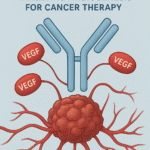Rheumatoid Arthritis: Understanding, Managing, and Preventing a Chronic Autoimmune Disease
Rheumatoid arthritis (RA) is more than just joint pain—it’s a chronic, systemic autoimmune disorder that can significantly affect the quality of life. Unlike osteoarthritis, which results from wear and tear, RA is driven by the immune system attacking the body’s own tissues, particularly the synovium—the lining of joints. If left unmanaged, RA can lead to joint deformity, disability, and involvement of other organs such as the lungs, heart, and eyes.
In this article, we dive deep into the pathophysiology, causes, risk factors, clinical features, diagnosis, treatment options, and preventive strategies for rheumatoid arthritis. Whether you’re a medical student, healthcare professional, or someone living with RA, this comprehensive guide is designed to give you a clear and thorough understanding of the disease.
What is Rheumatoid Arthritis?
Rheumatoid arthritis is a chronic inflammatory autoimmune disease characterized by symmetrical polyarthritis, primarily affecting small joints. It typically develops between the ages of 30 and 60 but can occur at any age, including in children (juvenile idiopathic arthritis). Women are affected about three times more often than men.
RA is not confined to joints. It’s a systemic disease, which means it can involve multiple organs such as the lungs (rheumatoid lung disease), heart (pericarditis), skin (rheumatoid nodules), and eyes (scleritis, keratoconjunctivitis sicca).
Pathophysiology of Rheumatoid Arthritis
The exact mechanisms of RA remain complex and not fully understood, but several key immunological events contribute to the disease:
1. Immune System Dysregulation
RA begins with an abnormal immune response, where T cells recognize self-antigens in the synovium. Activated T cells recruit other immune cells, such as B cells and macrophages, initiating a cascade of inflammatory events.
2. Cytokine Storm
Proinflammatory cytokines like tumor necrosis factor-alpha (TNF-α), interleukin-1 (IL-1), and interleukin-6 (IL-6) are released, perpetuating inflammation and promoting synovial cell proliferation.
3. Synovial Inflammation and Pannus Formation
The synovium becomes hypertrophied and inflamed, forming a pannus—an abnormal layer of fibrovascular tissue that invades and destroys cartilage and bone.
4. Joint Destruction
Chronic inflammation leads to the erosion of articular cartilage and bone, resulting in joint deformity, pain, and reduced mobility. Osteoclast activation contributes to bone resorption.
5. Systemic Manifestations
Cytokines circulating in the bloodstream cause systemic symptoms like fatigue, fever, and anemia. Long-term inflammation increases cardiovascular risk.
Causes and Triggers of Rheumatoid Arthritis
RA results from a complex interplay of genetic susceptibility and environmental triggers.
1. Genetic Factors
- HLA-DR4 and HLA-DR1 alleles: Found in a majority of RA patients.
- Other genetic polymorphisms (e.g., PTPN22, STAT4) also play a role.
2. Environmental Triggers
- Smoking: Strongly associated with RA onset, especially in genetically predisposed individuals.
- Infections: Epstein-Barr virus and others may trigger immune dysregulation.
- Hormonal factors: Estrogen may modulate immune responses, explaining the female predominance.
- Gut microbiota changes: Alterations in intestinal flora can contribute to autoimmunity.
Risk Factors for Rheumatoid Arthritis
Several factors increase the likelihood of developing RA:
| Risk Factor | Details |
|---|---|
| Gender | Women are 2–3 times more likely to develop RA than men. |
| Age | Onset typically between 30–60 years, but can occur earlier or later. |
| Family History | First-degree relatives with RA increase personal risk. |
| Smoking | Strongest modifiable risk factor, especially in HLA-DR4 carriers. |
| Obesity | Associated with higher inflammation and risk of developing RA. |
| Environmental Exposure | Silica dust and asbestos exposure may increase risk. |
| Hormonal Changes | Pregnancy and menopause can alter disease activity. |
Clinical Features of Rheumatoid Arthritis
RA is a symmetrical, progressive disease affecting multiple joints and potentially the entire body.
1. Articular Manifestations
- Morning stiffness lasting >1 hour.
- Swelling, pain, and warmth in joints (most commonly hands, wrists, feet).
- Decreased range of motion.
- Joint deformities over time (e.g., swan neck, boutonnière deformity).
2. Systemic Symptoms
- Fatigue
- Low-grade fever
- Loss of appetite
- Weight loss
3. Extra-Articular Manifestations
- Rheumatoid nodules
- Lung involvement: interstitial fibrosis, pleuritis
- Cardiac: pericarditis, increased atherosclerosis
- Ocular: scleritis, dry eyes
- Hematologic: anemia of chronic disease, Felty’s syndrome (RA + splenomegaly + neutropenia)
Diagnosis of Rheumatoid Arthritis
1. Clinical Assessment
- History and physical examination (symmetrical joint pain, swelling, stiffness).
2. Laboratory Tests
- Rheumatoid factor (RF): Present in ~70% of cases (not specific).
- Anti-CCP antibodies (ACPA): More specific than RF, detected early.
- ESR and CRP: Indicators of active inflammation.
- ANA, CBC, LFTs, RFTs: To rule out other conditions and monitor treatment safety.
3. Imaging Studies
- X-rays: Early stages show soft tissue swelling; later stages show joint space narrowing and erosion.
- Ultrasound/MRI: More sensitive in early detection of synovitis and joint damage.
4. Classification Criteria
The 2010 ACR/EULAR criteria include joint involvement, serology, acute-phase reactants, and symptom duration.
Treatment of Rheumatoid Arthritis
Treatment aims to reduce inflammation, prevent joint damage, and maintain function. A treat-to-target approach is commonly followed, aiming for remission or low disease activity.
1. Non-Pharmacologic Management
- Patient education: Improves adherence and outcomes.
- Physical therapy: Maintains joint mobility and muscle strength.
- Occupational therapy: Assists with daily living aids and joint protection strategies.
- Lifestyle modifications: Weight loss, smoking cessation, balanced diet.
2. Pharmacological Treatment
a. NSAIDs
- Provide symptomatic relief but do not alter disease progression.
- Examples: Ibuprofen, Naproxen.
b. Corticosteroids
- Used for rapid control of inflammation (short-term use).
- Example: Prednisone.
- Long-term use avoided due to side effects (osteoporosis, diabetes).
c. Disease-Modifying Anti-Rheumatic Drugs (DMARDs)
These are the backbone of RA therapy.
- Conventional DMARDs:
- Methotrexate: First-line therapy. Weekly dosing, requires folic acid supplementation.
- Sulfasalazine
- Leflunomide
- Hydroxychloroquine
- Biologic DMARDs:
Target specific immune molecules.- TNF inhibitors: Etanercept, Infliximab, Adalimumab
- IL-6 inhibitors: Tocilizumab
- B-cell depleters: Rituximab
- T-cell modulators: Abatacept
- Targeted Synthetic DMARDs:
- JAK inhibitors: Tofacitinib, Baricitinib
Combination therapy is often more effective than monotherapy.
3. Surgical Management
Indicated in severe joint destruction.
- Synovectomy: Removal of inflamed synovium.
- Joint replacement: Hip, knee, or shoulder replacement to restore function.
Complications of Untreated RA
- Joint deformities and disability
- Osteoporosis
- Rheumatoid vasculitis
- Cardiovascular diseases
- Lung fibrosis
- Increased infection risk due to immunosuppressive drugs
Prevention and Early Intervention
While RA cannot always be prevented, early diagnosis and intervention greatly reduce disease progression and joint damage.
Preventive Strategies:
- Avoid Smoking
Smoking is a major modifiable risk factor. Quitting can delay or prevent onset in high-risk individuals. - Maintain a Healthy Weight
Obesity increases inflammation and drug resistance. - Prompt Treatment
Early initiation of DMARDs can halt disease progression. - Monitor for Symptoms in High-Risk Groups
Especially those with family history or positive anti-CCP antibodies. - Regular Exercise and Joint Care
Improves flexibility and reduces fatigue. - Balanced Anti-inflammatory Diet
- Omega-3 rich foods (e.g., flaxseeds, walnuts, fatty fish)
- Antioxidant-rich fruits and vegetables
- Avoid processed foods and excess sugar
Living with Rheumatoid Arthritis: Coping and Support
RA is a life-long condition, but with proper care, many patients lead active and fulfilling lives.
- Support groups offer emotional support and education.
- Mental health care for depression and anxiety is vital.
- Mind-body techniques like yoga, meditation, and tai chi can ease stress and improve joint function.
Conclusion
Rheumatoid arthritis is a complex, chronic autoimmune disorder that, if left unmanaged, can lead to significant joint and systemic complications. However, with early diagnosis, aggressive treatment, and lifestyle modifications, disease progression can be halted and quality of life greatly improved.
Empowering patients through education, regular monitoring, and personalized care remains the cornerstone of successful RA management.
Frequently asked questions
1. What is the main cause of rheumatoid arthritis?
Rheumatoid arthritis is caused by an autoimmune reaction where the immune system mistakenly attacks the synovium—the lining of the joints. While the exact cause is unknown, it is believed to result from a combination of genetic factors (like HLA-DR4 genes), environmental triggers (such as smoking), and hormonal influences.
2. What are the early symptoms of rheumatoid arthritis?
Early symptoms of rheumatoid arthritis include joint pain, stiffness (especially in the morning lasting more than an hour), swelling in small joints like fingers and wrists, fatigue, and low-grade fever. Early detection is crucial to prevent joint damage and complications.
3. How is rheumatoid arthritis different from osteoarthritis?
Rheumatoid arthritis is an autoimmune disease that causes inflammation in the joint lining and can affect multiple organs. In contrast, osteoarthritis is a degenerative condition caused by wear and tear of cartilage. RA typically affects joints symmetrically, while osteoarthritis may affect one side more than the other.
4. Can rheumatoid arthritis be cured?
There is currently no cure for rheumatoid arthritis. However, early diagnosis and appropriate treatment with DMARDs, biologics, and lifestyle changes can effectively manage symptoms, reduce joint damage, and improve quality of life.
5. What foods help reduce rheumatoid arthritis inflammation?
Anti-inflammatory foods that may help manage RA include fatty fish (rich in omega-3s), flaxseeds, walnuts, leafy greens, berries, turmeric, and olive oil. It’s also advised to avoid processed foods, refined sugars, and trans fats that may worsen inflammation.
6. Is exercise safe for people with rheumatoid arthritis?
Yes, regular low-impact exercises like swimming, walking, and yoga are safe and beneficial for people with rheumatoid arthritis. Exercise helps maintain joint flexibility, muscle strength, and overall mobility, but it should be tailored to the individual’s condition.
7. What is the best treatment for rheumatoid arthritis?
The best treatment for RA depends on disease severity. First-line treatment usually includes methotrexate (a DMARD). In moderate to severe cases, biologic therapies like TNF inhibitors may be added. NSAIDs and corticosteroids help manage symptoms but don’t stop disease progression. A personalized treatment plan by a rheumatologist is essential.
For more regular updates you can visit our social media accounts,
Instagram: Follow us
Facebook: Follow us
WhatsApp: Join us
Telegram: Join us



